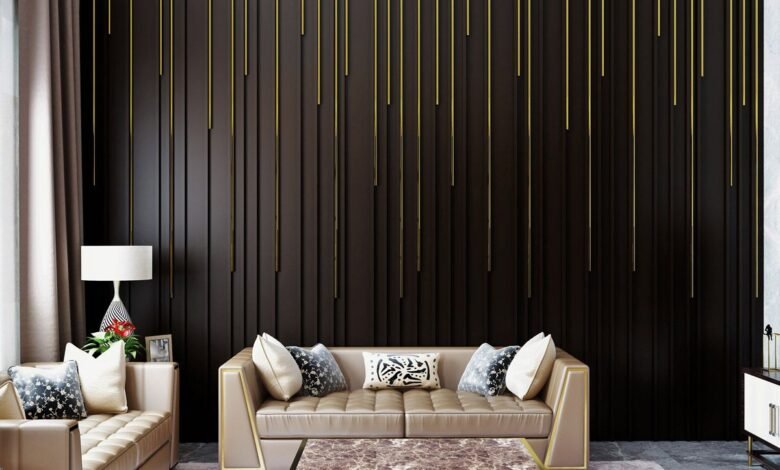
Introduction to Dining Room Remodeling
Remodeling your dining room can breathe new life into your home. It’s a space where friends and family gather to share meals and create memories, making it essential to design a warm and inviting atmosphere. One key aspect of dining room design is the use of wall panels, which can transform the look and feel of the entire room.
Importance of Wall Panels in Dining Room Design
Enhancing Aesthetics
Wall panels Dubai are an excellent way to add visual interest to your dining room. Whether you prefer a modern, minimalist look or a more traditional aesthetic, there are panels available to suit every style. From sleek, glossy finishes to rustic wood textures, wall panels can elevate the design of your space and create a focal point that draws the eye.
Adding Texture and Depth
In addition to their aesthetic appeal, wall panels also add texture and depth to your dining room. Flat, painted walls can feel bland and uninspired, but panels provide dimension and visual intrigue. Whether you choose raised panels for a luxurious feel or embossed panels for a subtle touch of elegance, the added texture will enhance the overall look of your room.
Types of Wall Panels for Dining Rooms
There are several types of wall panels to choose from, each offering its own unique benefits and aesthetic appeal.
Wood Panels
Wood panels are a classic choice for dining room walls. They add warmth and character to the space, and their natural beauty can’t be replicated with synthetic materials. Whether you prefer the rich tones of mahogany, the rustic charm of reclaimed barn wood, or the sleek sophistication of walnut, there’s a wood paneling option to suit every taste.
PVC Panels
PVC panels are a more budget-friendly alternative to wood. They come in a variety of styles and finishes, including faux wood grain and decorative patterns. PVC panels are easy to install and maintain, making them an excellent choice for DIY enthusiasts or homeowners on a tight budget.
Wainscoting Panels
Wainscoting panels are a traditional choice for dining room walls. They consist of wooden panels installed halfway up the wall, with a chair rail and molding to finish the look. Wainscoting adds a touch of elegance and sophistication to any dining room, and it can be painted or stained to match your existing decor.
Planning Your Dining Room Remodel
Before you begin installing wall panels in your dining room, it’s essential to plan your project carefully.
Setting a Budget
First, determine how much you’re willing to spend on your dining room remodel. This will help you narrow down your options and avoid overspending on materials or labor.
Choosing the Right Panels
Consider the style and aesthetic of your dining room when choosing wall panels. If you have a modern, minimalist space, sleek PVC panels or minimalist wood panels may be the best choice. For a more traditional look, consider wainscoting panels or classic wood paneling.
Measuring and Preparing the Space
Before you purchase any materials, measure your dining room carefully to ensure you buy enough panels to cover the entire area. Once you have your measurements, prepare the walls by removing any existing wallpaper or paint and ensuring they are clean and smooth.
Installing Wall Panels: Step-by-Step Guide
Now that you’ve planned your dining room remodel and chosen the right panels, it’s time to start the installation process.
Preparing the Walls
Begin by marking the location of your panels on the walls and ensuring they are level and evenly spaced. If necessary, use a stud finder to locate and mark the position of the wall studs, as this will help you secure the panels more effectively.
Cutting Panels to Size
If your panels need to be cut to fit the dimensions of your walls, use a saw or utility knife to trim them to size. Be sure to measure carefully and double-check your dimensions before making any cuts to avoid costly mistakes.
Applying Adhesive or Nails
Once your panels are cut to size, apply adhesive to the back of each panel or use nails to secure them to the wall. Follow the manufacturer’s instructions carefully, and be sure to use enough adhesive or nails to ensure the panels are securely attached.
Securing Panels Properly
After the panels are in place, use a level to ensure they are straight and evenly spaced. If necessary, use shims or spacers to adjust the position of the panels before the adhesive dries or the nails are fully driven in.
Tips for Achieving a Professional Finish
To achieve a professional-looking finish, take your time during the installation process and pay attention to detail. Use a high-quality adhesive or nails, and be sure to follow the manufacturer’s instructions carefully. Once the panels are installed, fill any gaps or seams with caulk or wood filler, and sand them smooth before painting or staining.
Decorating with Wall Panels
Once your wall panels are installed, it’s time to add the finishing touches to your dining room decor. Consider painting or staining the panels to match your existing furniture and accessories, and hang artwork or decorative mirrors to complement the panels and enhance the overall look of the room.
Maintenance and Care of Wall Panels
To keep your wall panels looking their best, clean them regularly with a mild detergent and water solution. Avoid using abrasive cleaners or harsh chemicals, as these can damage the finish of the panels. If your panels become scratched or damaged, repair them promptly to prevent further deterioration.
Conclusion
Installing wall panels in your dining room is a simple and effective way to update the look of your space and create a warm and inviting atmosphere for friends and family to enjoy. Whether you prefer the natural beauty of wood panels or the affordability of PVC, there’s a wall paneling option to suit every style and budget.
FAQs
- How much does it cost to install wall panels in a dining room?
The cost of installing wall panels in a dining room can vary depending on the type of panels you choose, the size of your room, and whether you hire a professional contractor. On average, homeowners can expect to pay between $500 and $2,500 for materials and labor. - Are wall panels easy to maintain?
Yes, wall panels are relatively easy to maintain. Simply clean them regularly with a mild detergent and water solution to remove dust and dirt, and repair any scratches or damage as needed. - Can I install wall panels myself, or should I hire a professional?
While it is possible to install wall panels yourself, it can be a challenging and time-consuming process, especially if you have limited DIY experience. Hiring a professional contractor can ensure the job is done quickly and correctly, saving you time and frustration. - Do wall panels come in different sizes and styles?
Yes, wall panels come in a wide range of sizes, styles, and finishes to suit every taste and budget. Whether you prefer the natural beauty of wood panels, the affordability of PVC, or the classic elegance of wainscoting, there’s a wall paneling option to suit your needs. - How long does it take to install wall panels in a dining room?
The time it takes to install wall panels in a dining room can vary depending on the size of your room, the type of panels you choose, and whether you hire a professional contractor. On average, homeowners can expect the installation process to take between one and three days.



